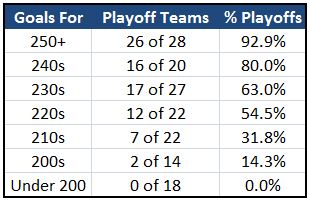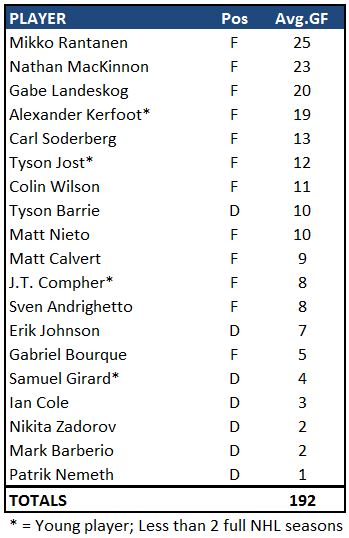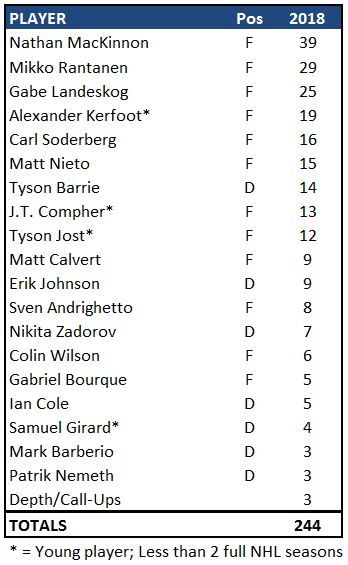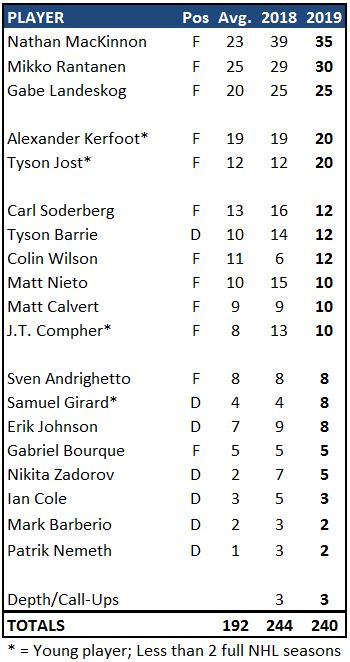© 2025 ALLCITY Network Inc.
All rights reserved.

Heading into the season, hockey fans and writers alike tend to do a blanket analysis on the strengths and weaknesses of each team around the league. Breaking down who should be good, who should be terrible, what will surprise and what will be the Achilles’ heel – it’s all as much a part of the October tradition as fall leaves and ubiquitous pumpkin flavorings.
After a standout year from the Avs’ top line and a solid collection of roster additions made over the summer, the team’s primary scoring, defense, and goaltending appear set. Goalies Semyon Varlamov and Philipp Grubauer are projected to be co-starters, and Pavel Francouz is a high-skill third option. The defense is talented and balanced, boasting a solid mix of young players and in-their-prime vets. And the top line remains one of the best in the world mere months after Nathan MacKinnon finished second in the league’s MVP voting.
However, what happens beyond that top line remains the biggest question mark for the Avs. Hockey is a team sport; even the best line can’t carry a roster to the post-season alone. Secondary scoring is critical, especially on the rare night when the big guns get shut down. And for the Avs, it’s still a bit of an unknown.
Almost every analysis written about the Avs points to this secondary scoring as the biggest weakness on the team. Between the overall youth, the recent adds, and the terrible 48-point season disrupting the career averages of most of the vets, it’s hard to get a read on this group of players.
As the Avs look to make consecutive playoffs for the first time since 2006, everyone knows they need secondary scoring. But how much? And from whom?
Punching the Ticket
First thing’s first: we need to establish what sort of scoring gets teams into the post-season.
The rule of thumb is that 250 regular season goals are the benchmark. Since 2014, this appears to be true. Only the 2015 Stars with 261 goals and the 2018 Islanders with 264 have failed to qualify after breaking that threshold.
However, the 240s are almost as effective. Sixteen of twenty teams that fell into this range over the past five years have made the dance, and those that fell short either suffered from major goaltending issues or just barely missed due to the way their division played out.
During this time period, the Avs have made the playoffs twice, once in 2014 with 250 goals and once in 2018 with 257. Last season’s total was particularly impressive, as only 18 teams have tallied more goals since 2014. Scoring was certainly up league-wide – 9 of those 18 teams were 2018 rosters – but the Avs still received plenty of offense from up and down their roster.
Since most of last year’s roster is returning, this bodes well for the Avs’ ability to repeat. Even so, there has been some roster movement in the past 12 months, and team totals don’t split top line scoring away from the rest. Ultimately, this is a question that needs to be examined on a more player-by-player basis.
The Breakdown
For this analysis, we’re going to say 240 goals will make the post-season cut. The Avs’ goaltending and defense should be able to keep the goals against under control, and even last season, only two of the sixteen teams that breached the 240 mark were playing golf in April. More goals are certainly better, but we’ll call this a worst(ish) case scenario.
Two of the biggest challenges in predicting goals are usage and injuries. To get a benchmark for each player, I calculated career goals per game and the number of games they typically play each year. For example, Erik Johnson has dealt with some fairly significant injuries over his career, so his expected games played number is only 64 instead of 82.
Now, that’s not to say that he’ll play only 64 games this year, but we don’t know who the injury bug will bite. By adding in a little bit of injury time to everyone’s estimate, it should bring down the numbers enough to cover for a player or two missing some significant time.
The same thing goes for usage and luck. These are career numbers, so the lucky and unlucky, high minute and low minute seasons are all mixed together. By the end, some of the players will score above their expected totals; some will score below.
As far as expected goals go, that’s not great. Racking up only 192 twine-tickles will almost guarantee an early end to the season. Fortunately, the Avs are a very young team that took a big step forward and have shuffled their roster around a bit in the past calendar year. If you look this year’s roster players and add up their raw goal numbers from last season, things start to look a bit better.
Mix the two together, add in some rounding and expectations, and the Avs path to 240 may look something like this:
Keep in mind this is a rough breakdown. A good handful of players will come out ahead of these numbers, just as a good number will come out below. This is only a rough path to 240. If Colin Wilson scores 15 goals instead of 10 and Tyson Jost scores 15 instead of 20, the Avs still end up whole with 30 between the two. Since we don’t know exactly how this season will play out, these numbers are meant to be realistic but flexible estimates.
Back to the chart. The top tier is the top line. Last season, Gabriel Landeskog, Nathan MacKinnon, and Mikko Rantanen combined for 93 goals, and this scenario has them on pace for 90. It’s a huge ask, but the Avs are still a top-heavy team. If they want to hit the 240 mark, they’re going to need to rely heavily on this trio to repeat at least close to their performance from last year.
Following them are the two second-line sophomores. Alexander Kerfoot had an extremely lucky rookie season; Tyson Jost did not. Hoping they can reach a combined 40 goals is perhaps optimistic, but they’ve shown very well in camp and the first few games of the season. If Kerfoot continues shooting and Jost stays healthy, they’ll be given every opportunity to lead the secondary scoring charge and establish themselves as clear-cut top six players.
Beyond that, you start getting into the “tweener” forwards and offensively-minded defensemen. These numbers will almost certainly flex up and down depending on usage and luck, but this group of players should see significant 5-on-5 time and reliable power play minutes. The 240 goal breakdown has 66 tallies coming from this group of six.
After that, you start getting into the depth and the defense. It’s a bit unclear what Sven Andrighetto‘s role will be in the lineup, but on average, he and Gabriel Bourque have the lowest goal totals of the forwards. They’ll still chip in and have the potential to blow away their expected totals based on usage, but realistically, they’re not players that should be relied on too heavily for depth scoring.
The defense beyond Tyson Barrie is the same way. Samuel Girard has the potential to surprise, especially with his second power play time, but jumping from 4 goals to 8 is already doubling his NHL production. Erik Johnson typically clocks in around that mark as well, especially if he’s given huge minutes again as the season wears on. The rest of the D had 18 goals of production last season, but 12 tallies is more in line with their averages.
Finally, the Avs gained 3 goals from call-up level players last season. On the current roster, Sheldon Dries and Vladislav Kamenev fall into this category until they carve out a larger role.
Add it up, and these 240 goals give the Avs an around an 80% chance at the playoffs. If they can find a way to score 10 more tallies, those odds jump to 93%.
Wrapping it up
There are still a number of questions that need answered, especially when it comes to the young players. For the Avs to find success this season, they need the Josts, Kerfoots, and Girards of the team to take a major step forward. The top line is excellent and already off to a hot start, but the team as a whole won’t be successful until a few more of their critical scoring roles are locked down.
Can the Avs make it to 240 or even 250 goals? Sure. They proved it was possible last season. Overall, their secondary scoring really isn’t in as dire of straits as it’s made out to be. It is, however, still the largest weakness facing this young team.
As the leaves continue to fall, it’s worth keeping an eye on these benchmarks. If lines 2 through 4 can find a way to hit these thresholds this season, the odds are very high the Avs will still be playing hockey when the trees green once more.
Comments
Share your thoughts
Join the conversation







